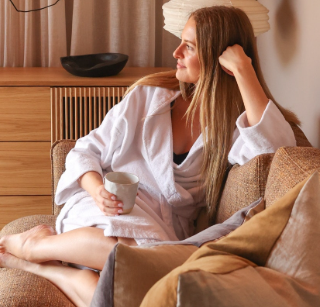Evenings can feel rushed and overwhelming, leaving little space to unwind before sleep. Many people struggle with restless nights simply because their minds are still engaged with work, social media, or other distractions. Relaxing before bed is not just about getting enough rest; it is about creating a calm, intentional transition from the activity of the day into the serenity of nighttime. When distractions are removed, the process becomes easier, and sleep comes more naturally.
Creating a distraction-free bedtime routine begins with examining your environment. The bedroom should be a sanctuary, a place that signals rest and comfort. Start by turning off electronic devices, including phones, tablets, and computers. Notifications, messages, and social media can trigger mental activity, making it difficult to slow down. Even the subtle glow from a screen can interfere with your body’s natural production of melatonin, the hormone that helps regulate sleep. Consider keeping devices in another room or using a designated charging station away from the bed. This simple step reduces temptation and creates a clear separation between wakefulness and rest.
Lighting plays a critical role in preparing your body for sleep. Bright overhead lights can keep your brain alert, while warm, soft lighting encourages relaxation. Dim the lights in your bedroom about an hour before bed, allowing your body to recognize that it is time to wind down. Some people find that using candles or low-wattage lamps enhances the calming atmosphere. Avoid sudden, harsh lighting as it can jolt your mind back into an active state.
Sound is another factor that influences relaxation. Background noise, television, or even loud music can prevent your brain from settling. Instead, opt for silence or soft, soothing sounds. Gentle instrumental music, nature sounds, or white noise can be effective in creating a serene environment. If you live in a noisy area, earplugs or noise-canceling devices may help maintain the tranquility necessary for restful sleep.
A critical aspect of bedtime relaxation is establishing a routine. Consistency signals to your body that it is time to sleep, reinforcing natural circadian rhythms. Begin with simple, calming activities such as reading a physical book, journaling, or practicing gentle stretching. Choose actions that do not involve screens or stressful content. Over time, these routines become a comforting ritual, making it easier to transition into sleep.
Mindfulness and breathing exercises are powerful tools for removing mental distractions. Many people experience racing thoughts at night, replaying the day or worrying about tomorrow. Practicing slow, deep breaths helps to anchor attention in the present moment. Focus on the rise and fall of your chest, the sensation of air entering and leaving your body. Even a few minutes of controlled breathing can lower heart rate, release tension, and prepare the mind for rest. Progressive muscle relaxation is another technique that involves consciously tensing and releasing each muscle group, guiding the body into a state of calm.
Temperature and comfort are often overlooked but significantly impact sleep quality. A bedroom that is too hot or too cold can create subtle discomfort that distracts the mind. Maintaining a cool, comfortable temperature helps the body recognize it is time to rest. Soft bedding, supportive pillows, and a tidy space contribute to a peaceful environment. Avoid clutter or items that may draw your attention, as visual distractions can interfere with relaxation.
Nutrition and hydration also affect your ability to relax. Heavy meals, caffeine, and sugar close to bedtime can energize the body when it should be winding down. Instead, consider light, easily digestible snacks if needed, and opt for calming herbal teas such as chamomile or lavender. Hydrate adequately throughout the day but reduce excessive fluids right before sleep to minimize nighttime awakenings.
Engaging in calming hobbies can further reinforce a distraction-free environment. Drawing, knitting, or light reading allows the mind to focus without overstimulation. Avoid activities that involve urgent communication or multitasking, as they may trigger stress responses. The goal is to enter a state of gentle focus where the mind is occupied just enough to prevent intrusive thoughts but not so much that it becomes alert and restless.
Limiting mental stimulation is equally important. Many people browse the internet or watch exciting shows as a way to relax, but this can paradoxically increase mental activity. Instead, consider listening to soft music, audiobooks, or guided relaxation recordings that promote tranquility. Meditation apps or calming narratives can also serve as a buffer against wandering thoughts.
Lastly, the mindset you bring to bedtime can shape your entire evening. Approach the process of relaxation with patience and gentleness. Instead of pressuring yourself to sleep immediately, focus on creating a sense of calm and contentment. Remind yourself that rest is not just an end goal but a restorative practice. By cultivating a peaceful attitude and minimizing distractions, your mind and body are better able to embrace sleep naturally.
In summary, relaxing before bed without distractions involves intentional adjustments to both your environment and your habits. Removing electronic devices, managing lighting and sound, establishing a consistent routine, practicing mindfulness, maintaining comfort, and cultivating a calm mindset all contribute to a serene transition into sleep. By consistently implementing these practices, you create a space where the body and mind can unwind, allowing restful, restorative sleep to become a natural part of your nightly routine. Relaxation before bed is not a luxury; it is a vital step in caring for your overall well-being, enhancing mood, energy, and resilience for the day ahead.






